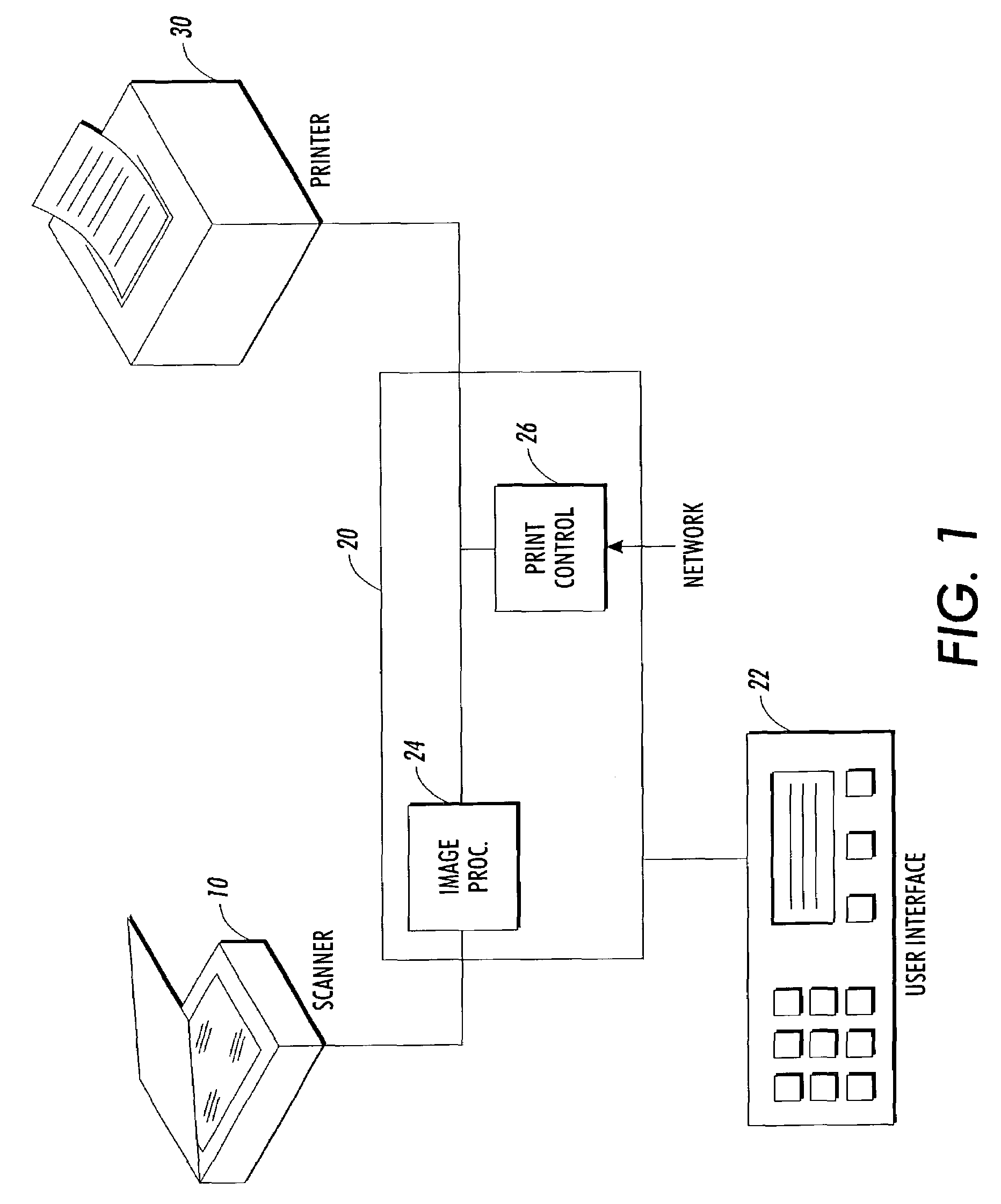Method and apparatus for calibration of a color printer
a color printer and color technology, applied in the field of color reprographic devices, can solve the problems of undesirable variation in the appearance of the output of such reprographic devices, the deviation of the underlying components, and the likely variation of typical color printing devices, so as to achieve reliable and consistent color reproduction and more reliable
- Summary
- Abstract
- Description
- Claims
- Application Information
AI Technical Summary
Benefits of technology
Problems solved by technology
Method used
Image
Examples
Embodiment Construction
[0016]Referring to FIG. 1, there is shown the major components of a typical color reprographic system which may incorporate one or more aspects of the embodiments disclosed herein. The color reprographic system includes input scanner 10, control module 20, and output printer 30. The control module contains a user interface 22 to allow the users of the device to enter control information, for example the number of copies to be made, image processor 24, and an optional network processor 26 which that can accept print commands from an external source and convert them to rasters suitable for printing on the output printer.
[0017]When the device is used as for copying hardcopy originals, the original to be copied is placed on the scanner and a command is given from the user interface 22, to initiate the copying process. Scanner 10 scans the original to generate electronic image of the page to be reproduced. Image processing module 24 accepts the electronic image from the scanner 10 and ap...
PUM
 Login to View More
Login to View More Abstract
Description
Claims
Application Information
 Login to View More
Login to View More - R&D
- Intellectual Property
- Life Sciences
- Materials
- Tech Scout
- Unparalleled Data Quality
- Higher Quality Content
- 60% Fewer Hallucinations
Browse by: Latest US Patents, China's latest patents, Technical Efficacy Thesaurus, Application Domain, Technology Topic, Popular Technical Reports.
© 2025 PatSnap. All rights reserved.Legal|Privacy policy|Modern Slavery Act Transparency Statement|Sitemap|About US| Contact US: help@patsnap.com



